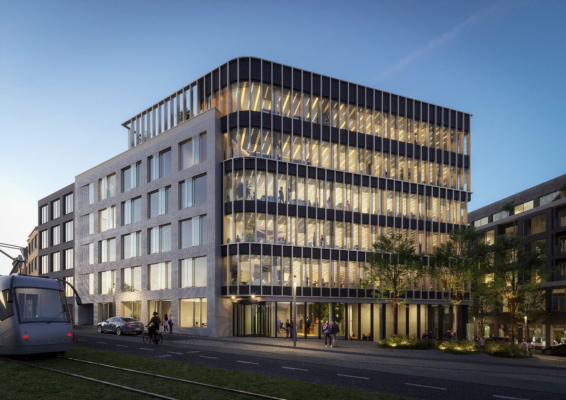 Credit: Eaglestone Luxembourg
Credit: Eaglestone Luxembourg
“The Bridge” office building, located in the the Brooklyn real estate programme on the Dernier Sol block in Luxembourg-bonnevoie, announced that it has been awarded the “Carbon Footprint Neutral” certification, the first real estate project in Luxembourg.
“The Bridge” building will feature circa 4,250 m2 of office space.
Jean-Christophe Bocci, Technical Director at Eaglestone Luxembourg, said: “We viewed this project as an excellent opportunity to implement a carbon certification process for the building, the first of its kind in Luxembourg, as a clear demonstration of our group’s commitment to social responsibility”.
Stéphane Bagat, Project Director at Eaglestone Luxembourg, said: “By adopting this certification process, we are seeking to take a pragmatic approach to examining architectural potential in order to reduce the carbon impact of our projects as much as possible”. He continued: “Furthermore, occupants are becoming increasingly attuned to environmental aspects. Although this is not the primary objective of the approach, this commitment also serves to address new market expectations.”
Measuring, reducing and offsetting emissions
The project developer, Eaglestone Luxembourg, approached Energie et Environnement, which launched the Carbon Footprint label earlier this year. The engineering consultancy firm that specialises in energy and environmental issues and provides guidance and assistance in developing projects by assessing their carbon footprint, helping to significantly reduce their emissions and ultimately, by offsetting residual emissions associated with implementing them.
“The Carbon Footprint label, which is part of a “measure-reduce-neutralise” approach, aims to support and promote the efforts of entities that are committed to reducing their carbon impact,” explained Julien L’Hoest, partner at Energie et Environnement. “Based on ISO standards and internationally recognised benchmarks, it applies to real estate developments as well as to any other activity or commodity”.
An accurate assessment of the carbon impact of the initial project is compiled based on the quantities of materials recorded in the schedules.
“The assessment process qualifies for the Carbon Footprint Checked label. It is essential in that it can be used to identify the components of the building that are high emitters of CO2 and examine the solutions to minimise their impact,” added Daphné Piona, from the Energie et Environnement office. “To obtain the “Carbon Footprint Optimised” label, the emissions associated with the project must be significantly reduced.”
A reforestation project in the East of France to offset 2,900 metric tons of CO2
Following the assessment and CO2 reduction phases, measures to offset residual emissions have been implemented. For Eaglestone, this carbon contribution consists of funding regional projects that contribute to reducing global emissions.
Tthe CO2 emission reduction phase of the project enabled more than 10% of the emissions of the initial project to be saved.
On the whole, to achieve carbon neutrality of the future office building, Eaglestone will offset nearly 2,900 metric tons of CO2 equivalent by undertaking to regenerate a degraded forest plantation covering an area of approximately eighteen hectares located in Moselle. This action is carried out in collaboration with the French national forestry office (ONF).








